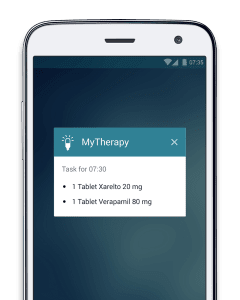All men are created equal, but not all fevers. There are three types of fevers and one of them is called low-grade fever. You might wonder, what is a low-grade fever? Is this a new kind of fever? How serious is it? If it is just based on the name, this type of fever might sound harmless. However, keep in mind that fever can be the early symptom for many medical conditions, ranging from less serious diseases (such as common colds) to life-threatening ones (such as meningitis) or even COVID-19. Read more to discover the cause, symptoms, its relation to COVID-19, and some treatments for a low-grade fever.
What is a low-grade fever?
First of all, let’s talk about fever. Fever is a condition when an individual’s body temperature is higher than normal. For most people, a normal body temperature usually lies within the range of 98.6-100.4°F (37-38°C). When your body temperature is higher than 100.4°F (38°C), you are considered to have a fever. Research also shows that normal body temperatures can vary from person to person by about 1.8°F (1°C). However, if you’re healthy, your body temperature should be within the normal range.
When your body temperature is slightly above what is considered normal but below the temperature of a fever, you are likely to have a low-grade fever. This means the temperature that falls between 100.5-102.2°F (38-39°C).
The other two fever categories are the moderate-grade fever (100-102°F or 38-39°C) and high-grade fever (104-106°F or 40-41°C).
What does it mean for adults to have a low-grade fever?
A fever can mean a lot of different things, but in adults, it is usually a sign that your body is working to keep you healthy and protect you from an infection.
You might think that since the temperature of a low-grade fever isn’t very different from the normal body condition, this type of fever means lesser infection. Likewise, a high-grade fever is presumably caused by a more serious infection since your body gets warm more drastically. Those assumptions aren’t really accurate.
The severity of fever doesn’t always mirror the severity of the infection. Each person has a different level of normal body temperature. For someone whose normal body temperature is typically in the lower range, the hike of their fever temperature may also be lower. Consequently, it may only be registered as a low-grade fever, whereas in fact, it could be more serious than that.
Normal body temperature (and ultimately, the fevered body temperature) could drop as someone gets older. Therefore, many believe that older people are more susceptible to have a low-grade fever. They have to be extra careful on reading their body temperature than young adults or children.
What causes low-grade fever?
An increase in body temperature is usually a normal response to an infection. If you have a cold, you could have a low-grade fever as well. This combination doesn’t always occur, but cold and low-grade fever often go together. Flu, on the other hand, is more often accompanied by the moderate- or high-grade fever than the milder type.
However, low-grade fever could also be caused by serious diseases. Keep on reading to find out the explanation.
What are the symptoms of low-grade fever?
Besides the combination with common symptoms of colds and flu, such as coughs and sore throats, the list below contains some other signs of low-grade fever:
- Headache
- Sweating
- Warm skin and/or flushed face
- Shivering/chills
- Muscle aches
The list above isn’t a comprehensive list of all low-grade fever symptoms. Please confer with a medical practitioner for an accurate diagnosis.
When to see a doctor?
First, if your fever lasts more than three days, it is recommended to get yourself check by a doctor. Second, depending on the underlying cause of the low-grade fever, it could be a sign of more severe conditions. Some of those are respiratory infections, tuberculosis, autoimmune disease, and drug fever (a fever that coincides with an administration of a drug and disappears after the discontinuation of the drug), among others.
Here are several less common symptoms of persistent low-grade fever, including, but not limited to:
- Persistent vomiting
- Rash that gets worse
- Seizures
- Difficulty breathing
- Severe headache
- Hallucinations
Considering fever can be a sign of our body defense mechanism, it’s tricky to define the severity of a low-grade fever. We suggest consulting with your doctor to determine the appropriate treatment based on your condition.
I have a low-grade fever, do I have COVID‑19?
Since the COVID-19 pandemic, most people are getting more concern when their body gets a little warmer than normal. After all, according to CDC, besides fatigue, headache, sore throat, and loss of smell or taste, fever is one of the early symptoms of COVID-19.
A low-grade fever may occur in people who are infected by the Coronavirus. However, keep in mind that it is also possible to have COVID-19 with minimal or even no symptoms at all. The type and severity of COVID-19 first symptoms can vary widely from person to person. Thus, while it’s not a guarantee that you are infected, call your doctor to discuss the next step.
How to treat a low-grade fever?
There are several things you can do to make yourself feel better if you are experiencing low-grade fever. Some of our recommendations are:
- Have plenty of rest
- Drink lots of fluids
- Place a cold, damp washcloth on your forehead or the back of your neck
- Take over-the-counter (OTC) medications. Medicines that contain acetaminophen and anti-inflammatory drugs (NSAIDs), for example, ibuprofen, aspirin, and naproxen can help to reduce fever. Consult with your doctor for the right treatment, medications, and dosage.
Fever is one of the most common medical signs. About 30% of healthcare visits by children and up to 75% by adults are triggered by fever symptoms. Although fever is our body’s natural defense mechanism, treating fever doesn’t appear to worsen the outcomes.
Here are some other articles we think you might enjoy:
Mental Hygiene: The Best Tips and Tools for Medication Management
Mental Hygiene: 8 Apps to Help You Through the Coronavirus Crisis



